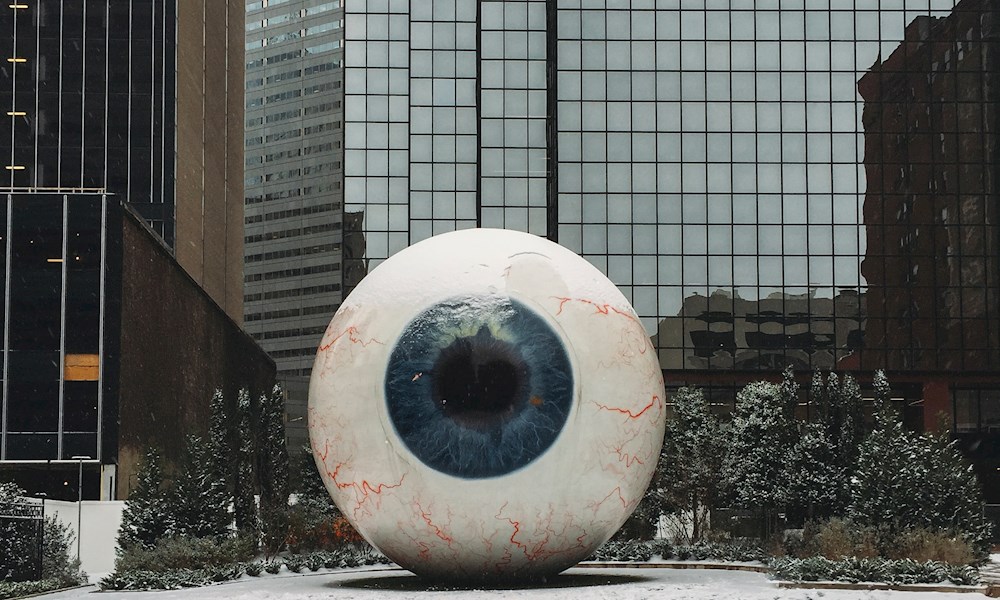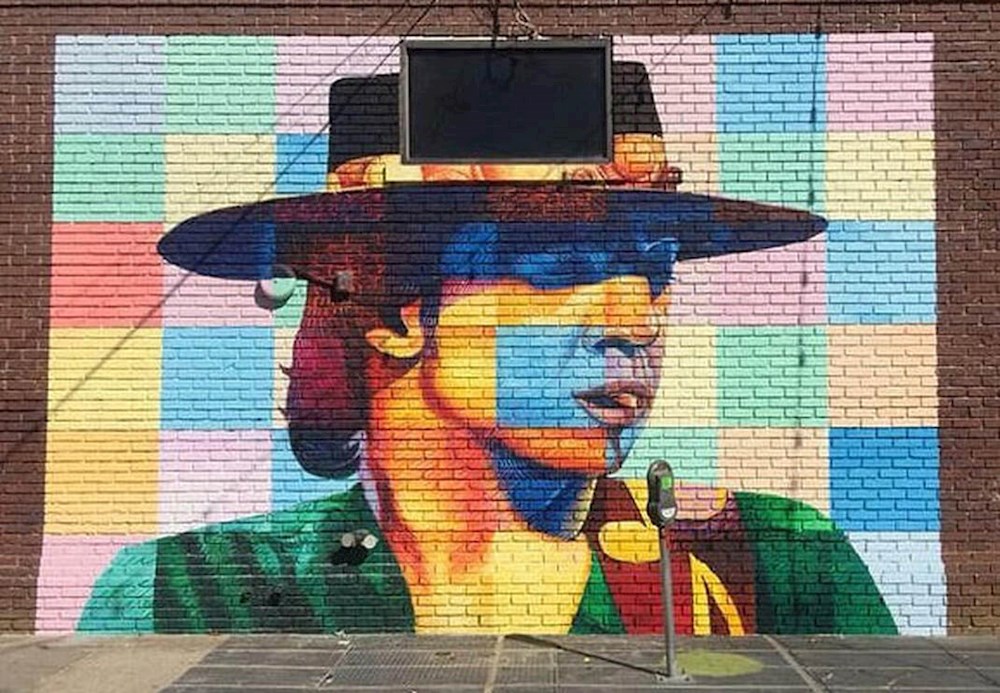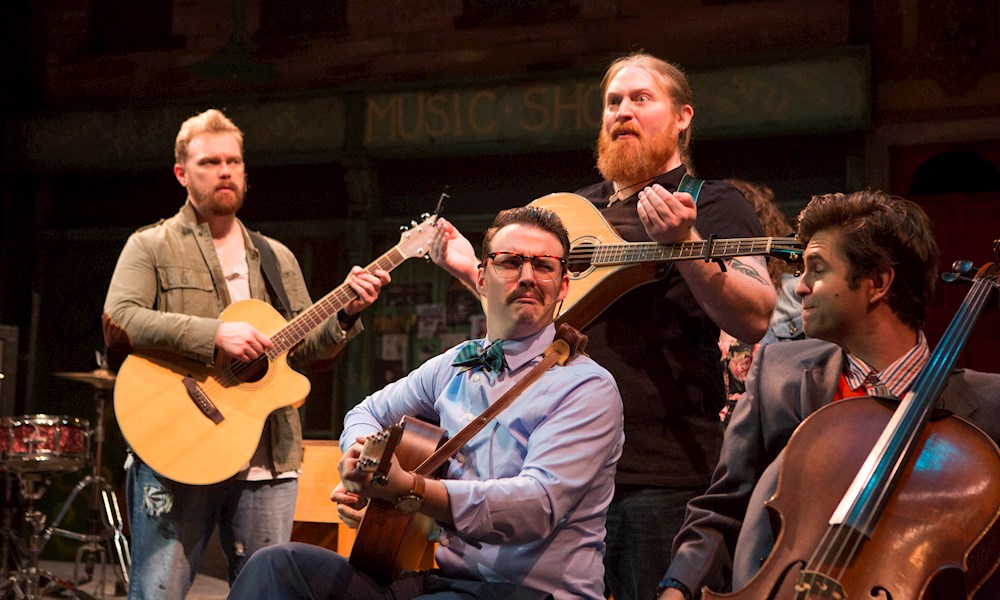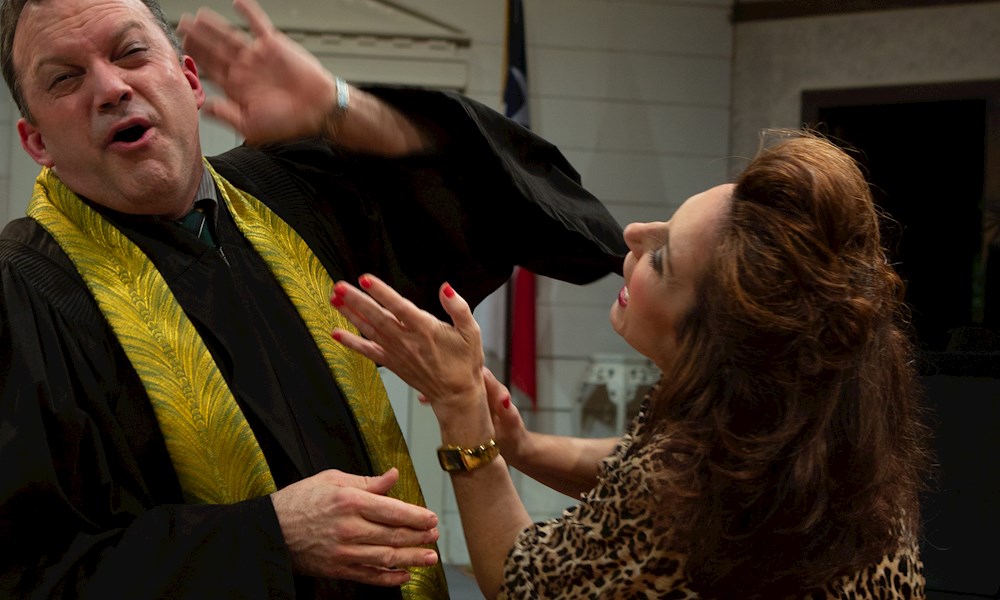- DataArts News
Dallas Didn't Make the List of Top Arts Communities | Perspectives from the Public
- Posted Oct 17, 2019
A study released by SMU DataArts in August shows that Dallas’ arts community has more money but fewer artists and arts organizations when compared with many similar-sized cities in the U.S.

Dr. Zannie Voss is the director of SMU DataArts, which has released the Arts Vibrancy Index annually for the last five years. Speaking with the Dallas Observer last month, Voss said that population growth in Dallas-Fort Worth (DFW) may help explain why it ranked 149th in arts vibrancy out of 953 communities examined this year.
The latest census bureau data shows that last year the DFW metro area added more new residents than any other metro area in the nation, for a total of 1 million new residents in the last eight years.
Economic opportunity has proven to be a major driver of this migration. Toyota, PGA of America and Pizza Hut are just a few of the corporate headquarters that have moved to North Texas in the last decade, bringing job seekers with them.
The Arts Vibrancy Index is the first study to evaluate the level of supply, demand and government support for the arts in communities across the U.S. It considers 12 metrics, including the number of independent artists, program revenue and available state arts dollars, which are analyzed per capita.
“There’s nothing wrong with the numbers that are here, it’s just that it tends to be quite concentrated and because it’s per capita, there’s that much less going on for more and more people,” Voss told the Observer. “It’s just a question of whether arts and culture will continue to keep pace.”
The purpose of the Arts Vibrancy Index is to help artists and arts organizations identify challenges that can be addressed in their cities, as well as available resources. And at least one North Texas nonprofit, The Arts Community Alliance (TACA), is already hard at work coming up with ways to address Dallas’ low arts supply.
TACA has been raising money for the arts in Dallas since 1967. Today it doles that money out in the form of more than 60 general operating, artist residency and new works grants each year. A dozen organizations have already applied for TACA funding in the first quarter of 2020.
President and Executive Director Wolford McCue says that because of TACA’s rigorous review process that looks at everything from an organization’s artistic excellence to financials, a grant from them can act as a “good housekeeping seal of approval” that leads to additional funding.
“We have volunteer panels that are like secret shoppers and go out and observe the arts. We give money to the big shots like the Dallas Symphony, the Dallas Museum of Art, The Dallas Opera and the Nasher Sculpture Center, but three-quarters of the organizations have budgets under a couple million dollars,” McCue says. “We have gotten the knack of uncovering new and emerging organizations that are creating something that is really meaningful.”
But in addition to providing monetary support, a big part of TACA’s role in Dallas is what McCue calls arts leadership. It more or less means helping carve a path forward for the local arts community as a whole.
“I define arts leadership as something that we can do but no individual arts organization can really do,” he says.
This aspect of TACA’s work is what led McCue to begin following the Arts Vibrancy Index, and eventually to connect with a local consulting team of Stanford M.B.A. graduates who helped TACA dive deeper into its findings of Dallas.
In the five-year history of the Arts Vibrancy Index, Dallas has never made the top 20 most vibrant cities, while New York, San Francisco and D.C. have been in the top five every year.
The Stanford group conducted qualitative and quantitative research with artists across the country that showed there were 299 artists per 100,000 residents in Dallas and attempted to determine what Dallas could do to be more attractive to artists. McCue speculates that more artists would also have a positive impact on the number of arts organizations.
“They don’t get started by the people who are greatly supportive of the arts financially, they get started by actors and dancers and so forth,” he says. “It takes the artists to generate an idea and then they attract support in the community.”
The three main artist draws that TACA identified were: a feeling that the artists in a community are connected; active community support of the arts through attendance or special initiatives; and the ability of artists to support themselves in a job related to their field of interest.
“They don’t want to be a bartender or work at Starbucks,” McCue says. “If they can be an administrator at a theater company that’s much more fulfilling and important to them.”
Armed with this new information, TACA invited several dozen local artists to brainstorm new local programs or services that could help fulfill these core artist needs. This process netted 35 refined concepts that were presented to a wider group of Dallas artists who were asked to rate their value.
In the last few years, Dallas’ Office of Cultural Affairs (OCA) has been conducting its own review. Last fall it released a new Cultural Plan, which it hadn’t updated in about 15 years, with the intent to renew the plan every five years moving forward.
This plan represents the city’s vision for the future of Dallas’ arts and culture, and several of the ideas that TACA brainstormed with artists were incorporated, including more microgrants for artists and better access to rehearsal space.
Affordable rehearsal space for medium-sized organizations was the third highest priority need according to local artists. One TACA-produced concept that OCA is implementing to help with this is an online database and scheduling tool that McCue says has already proven effective in Seattle.
“An individual artist or arts organization could go [to an online database] and find available rehearsal space, or performance space, or studio space that they could rent for a day or a month,” he says.
Another program McCue has high hopes for would set up local artists with paid mentorships. These mentorships would be for children or adolescents who have an interest in the arts but may not be candidates for Dallas’ arts magnet schools.
While TACA is continuing to work on improving and other issues identified by the annual Arts Vibrancy Index, the statistics don’t always match up with the day-to-day experiences of local artists and arts organizations.
Artists we spoke to validated the importance of a reasonable cost of living and said Dallas provides that, but they also believe the talent pool in Dallas is larger and the competition stiffer than ever.
Steve Hunter is an independent muralist and mosaic artist whose work can be seen all over Dallas, including his larger-than-life depictions of Linda Darnell, original Batgirl Yvonne Craig in the Oak Cliff section of Dallas, just west of downtown, Stevie Ray Vaughan and local poet Rawlins Gilliland in the Deep neighborhood, which is known for its nightlife and artistic spaces. He also frequently does community work where he involves local non-artists in public art projects.

Over the last couple of years, Hunter says he has seen more muralists in Dallas. While he occasionally refers jobs to friends and vice versa, a close-knit community of artists isn’t a huge priority to him since artists aren’t his main social group and he generally prefers to work alone.
Instead, the perceived surge in artists manifests itself as competition for jobs.
Hunter says he’s being underbid more often, whether through the traditional channels or new online platforms like Thumbtack, and he believes this practice is driving prices down for artists across the city.
“There are more people out there doing [murals] and there’s a lot of people who are hungry to get started, so they’re doing it at a reduced price just to get the job, which I get,” Hunter says, admitting he did the same thing when he was first starting out. “There’s a lot of scraps down there at the bottom but I’ve definitely noticed there’s more competition for the larger commissions.”
Originally from Scotland, Hunter relocated to Dallas in 2004 to complete murals for a school in Oak Cliff and ended up staying on as a teacher. In 2010 he set up shop as a muralist and it’s been his primary source of income ever since.
Hunter says when he first moved he found Dallas to be more business-oriented than art-oriented, and his business had a difficult first few years during the recession.
But while he and his wife briefly considered moving back to Scotland or to a more art-friendly city in the U.S., they stayed because he had always been able to make a livable wage, and they saw potential.
“I saw a lot of opportunity in places like Deep Ellum,” he says. “There were all of these signs of new businesses coming back to the city.”
Now that the economy has rebounded, Hunter says he’s getting more commissions than ever, and many of them are outside the stereotypically “artsy” Dallas neighborhoods like Deep Ellum and downtown.
“When I set up, there were just a couple of small pockets around the city where [murals] were acceptable in public places,” he says. “Now everybody wants a mural inside their restaurant. I’m working places where I never would have expected to be, like in Uptown.”
He speculates that neighborhoods like Uptown, dotted with chic restaurants, high-rise apartments and boutiques, used to consider murals downscale. “I’ve definitely noticed a change in that,” he says.
But while there’s definitely more work, Hunter says not all of those opportunities are going to Dallas artists.
“There’s an enormous mural at the new apartments in Deep Ellum — it’s some 15-story, exterior mural — and he’s from Italy, I think. I noticed that there was an Englishman doing a new mural on Elm Street,” he says. “There are definitely more of these established artists that are traveling through the city.”
Jeffrey Schmidt, artistic director at TACA grantee Theatre Three, also has the impression that there are significantly more artists and artists organizations in Dallas than patrons.
On the positive side, Schmidt says when he’s casting productions he has more actors to choose from than ever. He uses an upcoming production of The Elephant Man, for which he wanted a tall supporting cast, as an example.
“Fifteen years ago, I could have done that, but I would have had to sacrifice talent,” he says. “When I cast [The Elephant Man], I was able to go, ‘OK, you’re a great actor, but you’re a great actor and really tall.’ There’s depth to our talent pool now that there wasn’t then.”
Since the Art Vibrancy Index didn’t exist 15 years ago, there’s no data to substantiate whether the number of artists per capita has increased since then.
Both Schmidt and Theatre Three Associate Artistic Director Christie Vela agree that the cost of living plays a huge role in attracting artists to Dallas.
A big reason why Schmidt chose to pursue a theater career in Dallas is because of the wealth of broadcast work available, and he says that’s a major asset to actors who reside here.
Vela agrees. “Speaking as an artist, the most important factor I think for a person to be able to create their art is to be able to live first — to be able to pay your rent and have some food. What is that, Maslow’s hierarchy of needs?” Vela says. “You need those first before you can get to art. And I think as far as a city that’s affordable to live in, Dallas is great.”
Schmidt says he constantly hears out-of-town artists remark how impressed and surprised they are by the quality and number of arts organizations in Dallas.
“It seems easier to find your group of people and stay in the town than move to New York, where on top of having all of this college debt, it’s so expensive to live,” she says, citing Kitchen Dog Theater, which was founded by SMU graduates, and Second Thought Theatre, which is a product of Baylor University.
Rather than the dwindling of artists and arts organizations, both Schmidt and Vela are concerned about the number of arts patrons in Dallas. Schmidt says the best way to create new theater patrons is through the survey-of-theater courses at local colleges and universities like SMU.
“That’s what we need,” he says. “I don’t care that anyone learns who that first actor was who stepped out of the chorus in Greek theater. I care about making new good theater patrons.”
Schmidt hasn’t noticed a bump in subscribers congruent with the growing North Texas population.
“We’re not getting all of the Toyota employees coming down here,” he says, laughing.
If anything, he says that population growth has made it harder for Theatre Three’s core demographic in North Dallas and Plano to get to the theater, which is located some 15-20 miles away in the Quadrangle in Uptown.
“The art gets better and better, the quality gets better and better from our professional organizations, but there aren’t enough new patrons coming in,” he says.
Schmidt believes that more arts organizations are competing for the same audience. And one side effect is that theaters like Theatre Three are forced to take fewer risks. This is particularly true in Dallas, where he says audiences tend to be more conservative to begin with.
Vela contrasts Dallas audiences with those she encountered in Providence, Rhode Island, where she worked at a university theater.
“It seems like up there [in New England] the audiences are ready to take that leap with the theaters, and down here you kind of have to go, ‘OK, we’re going to take a risk that someone’s going to walk out in a huff,’” she says.
About 40 percent of Theatre Three’s ticket sales are made up from season subscribers, according to Schmidt. “That subscription money is really important to us because it’s money pre-production, not money post-production,” he says.
But subscriptions are trending downward nationwide, and like other theaters, Theatre Three has had to learn to survive with fewer subscriptions as more people prefer to buy their tickets a la carte.
“We’re not in New York or Chicago, and what we experiment with sometimes has to be tempered with who’s watching it,” Schmidt says. “If they see something they don’t like, you might not get them back.”
Hunter, Schmidt and Vela all say that a lot of great work is being done in Dallas, and they believe the arts community here is trending in the right direction, but there are a few key things that could be done for artists’ benefit.
To start, Hunter wishes the city of Dallas would update some of its compliance codes. He thinks they’re outdated.
“Each part of town is different but they have these kind-of antiquated systems where the lettering can only be X amount of inches tall and it can only be three words, or it has to be a plastic sign,” Hunter says. “I think it’s hindering a lot of people who would otherwise hire more artists to do work.”
One of Theatre Three’s frustrations is the lack of a dedicated theater critic. While The Dallas Morning News, KERA, the Observer and TheaterJones still cover theater to varying degrees, full-time critic positions have been eliminated in recent years.
“It’s really affected all of us,” Vela says. “You’d think it would be great to have access to a bunch of people posting [on Facebook], ‘This show is great,’ but who cares? There’s some kind of clout when you are a critic working for a major news outlet that has an opinion about something, for good or bad. It gets people in seats.”
She and Schmidt find that Theatre Three gets more of a press bump when it produces crowd-pleasers like last season’s Once, so it has reason to favor those. They’ve also tried everything from influencers to producing video content, running their own blog, offering Wednesday matinees and a new ticketing platform to help compensate for the changing times.

The new Theatre Three website is designed to appeal to younger, more noncommittal patrons who shop on their phones. It makes it easy to spontaneously purchase tickets to a single performance or purchase a flex package that allows one to pick and choose a few performances at different times.
Schmidt and Vela say they also look to other theaters for innovative ideas. Shakespeare Dallas has recently been taking some of its productions to Dallas’ northern suburbs and Second Thought Theatre is currently doing a co-production with Circle Theatre in Fort Worth to share audiences and offset costs.
“We’re definitely open to exploring all possibilities to get people here,” Schmidt says.
While Hunter has never seen a need to apply for grants or connect with local arts organizations, Schmidt says TACA’s support has been instrumental to Theatre Three’s success.
He finds the workshops and classes on such topics as how to get more subscribers and how to market to people in the surrounding communities every bit as valuable as the monetary support the theater has received.
“They’ve started a new program called TACA 360 that gets younger business professionals involved and introduced to all the arts organizations,” he says. “We had a large group of TACA 360 see a farce we did in the spring called Raptured.”

While Dallas received high marks in this year’s Arts Vibrancy Index for arts dollars – it scored in the 93rd percentile – Schmidt’s experience is that corporate support is low compared to other cities like Houston. He says TACA is one organization that helps fill that funding gap.
Schmidt says outside funding is critical for midsize organizations like Theatre Three, which some people may falsely assume are thriving financially because they have the support of organizations like TACA.
“There’s an assumption that, ‘Oh, they’re fine. So we can start moving more support and resources from midsize organizations to smaller ones, so we can make sure everyone gets funded.’ I worry about organizations like us in regard to that.”
Schmidt and Vela say that midsize theaters serve as a critical stepping stone for artists, actors and playwrights in the DFW area to the Dallas Theater Center or national platforms.
One example is Major Attaway, who performed in Hands on a Hard Body at Theatre Three in 2014. That’s where he got connected with Pulitzer Prize-winning playwright Doug Wright, who put in a word for him in New York. Now Attaway is playing the Genie in the Broadway production of Aladdin.
“If we weren’t here, how is a playwright going to go from a tiny, tiny, tiny little theater company to having something produced at the national new musical festival?” Vela asks. “You need the midsize theaters to do that.”
Schmidt says youth organizations are always popular with donors, which he supports, but “we need to make sure that they have a place to go once they’re not kids.”
One finding of the 2019 Arts Vibrancy Index was that the existing arts organizations in Dallas are densely concentrated around downtown.
All of the people we spoke with share a common vision for the future of the Dallas arts community, and it’s one where artists have the resources and opportunity to do their work all across town, not just in the Arts District.
“The Arts District is really beautiful, it is, but it’s kind of insular, and it faces away from the city, and it’s located in this little highway-locked area that doesn’t quite feel super welcoming to everybody in the city,” Vela says.
Hunter is happy that he sees the public art expanding beyond Deep Ellum and downtown and hopes that, in this regard, Dallas will eventually emulate Philadelphia, another city he has worked in and admires.
“[Philadelphia has] these enormous murals and public art installations and that’s been really eye-opening,” he says. “I’ve never seen something like that. They just seem to be integrated in the whole city instead of just little pockets.”
McCue looks to a different city for inspiration. “I think that it would be vibrant if the number of artists and arts organizations here were on par with numbers in a place like Minneapolis and that I could experience art without a lot of physical difficulty, meaning distance,” he says.
Location is not a criterion that TACA makes grants on, but McCue cites the Bath House Cultural Center on White Rock Lake and Undermain Theatre in Deep Ellum as examples of neighborhood organizations already doing the work of intercepting people with art in their daily lives. He hopes to see more of that as the number of artists here grows.
“I feel like there’s a richness of the arts when it’s perceived as important to the overall fabric of the community,” he says. “It’s not an optional kind of thing.”
Caroline Pritchard is a copyeditor at Publicis Hawkeye and a freelance journalist in the Dallas-Fort Worth area.


